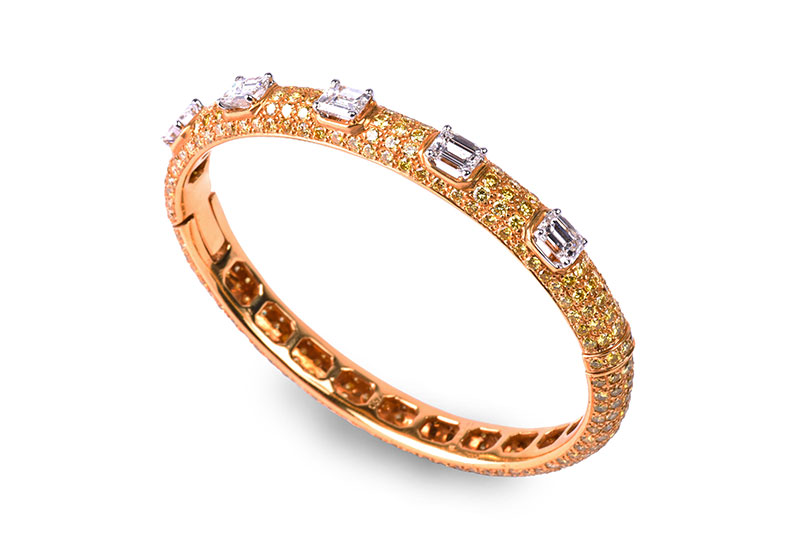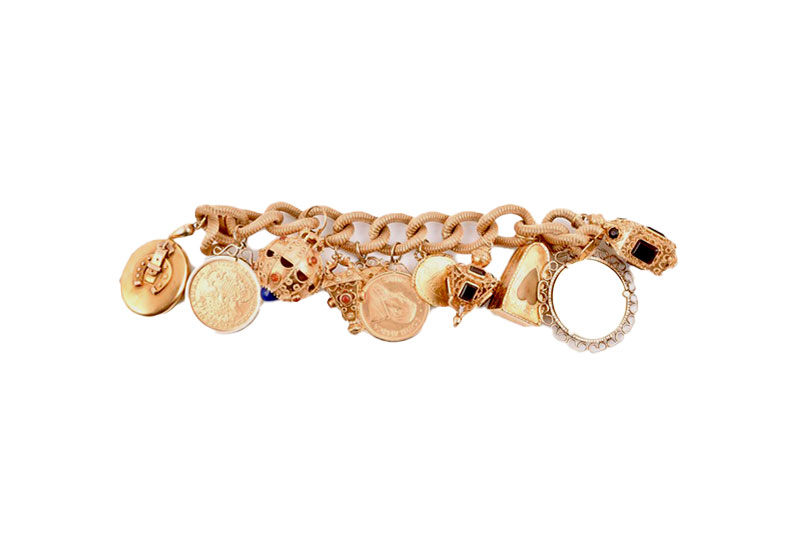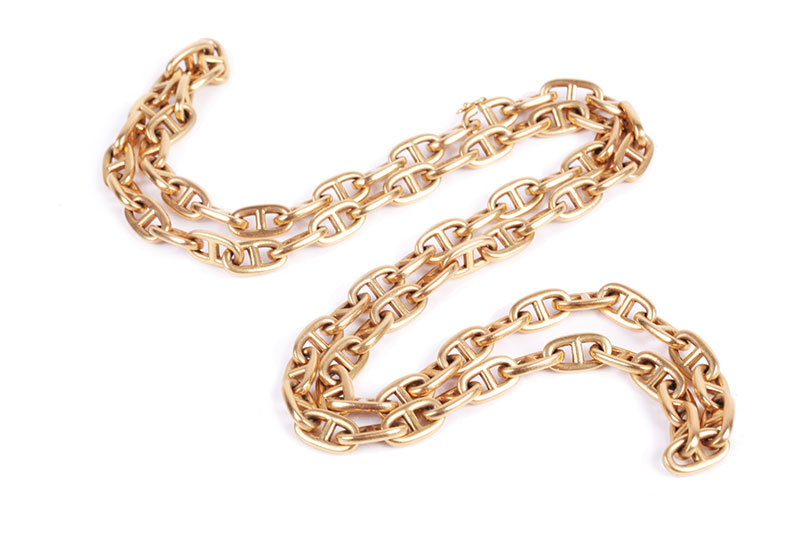How Can You Tell if Gold Jewellery is Real?
As antique jewellery is often not hallmarked, there are several tests that can be performed
24/01/2025
Gold has been a symbol of wealth, status, and power for thousands of years. Prized by early civilisations to the present day, this lustrous, yellow metal is valued, not only for its aesthetic appeal, but for its malleability and for its scarcity. Gold has been used to denote divine power in religious and spiritual contexts for millennia and has long been a symbol of royalty and nobility.
 Graff. An 18ct yellow gold and diamond bangle
Graff. An 18ct yellow gold and diamond bangle
It is an excellent electrical conductor and, since the industrial revolution, has been sought after for numerous technological applications. In times of economic or political uncertainty, gold is viewed as a ‘safe haven’ investment or a concrete sign of wealth, particularly when investors lose confidence in currency.
But how can you tell if your gold jewellery is real? Perhaps the best place to start is with a hallmark. Hallmarks can tell you how old your gold is, its purity, as well as when and where it was made. They are intended to reassure the buyer of the authenticity and quality of the piece, but they also serve to inform the owner of the jewellery of its provenance.
Hermes, Paris. An 18ct yellow gold chaine d'ancre necklace
Compulsory hallmarking is relatively recent. In the UK, hallmarking was not compulsory until the 1920s and in the United States it did not become commonplace until the 1950s. In India, a huge consumer of gold jewellery, hallmarking only became compulsory in 2000.
As antique jewellery is often not hallmarked, there are several tests that can be performed. Pure gold is not magnetic, so attraction to magnetic pull will indicate that your jewellery is either fake or an alloy of metals. Pure gold will also sink in water, faster than other metals.
Nitric acid can be used to test your gold jewellery. Pure gold should not react to nitric acid, and so a reaction can indicate if an item is gold plated or inferior quality. However, as acid is both toxic and corrosive, there is the risk of damage to any gemstone used in the jewellery, and the need to scratch off some gold to perform the test can further damage your piece unless done by a professional.
 A fine and impressive yellow gold charm bracelet of textured hollow curb-links
A fine and impressive yellow gold charm bracelet of textured hollow curb-links
It is important to note, however, that most ‘real’ gold jewellery is not pure gold. Most genuine gold items contain a blend of gold and other metals. 18K gold which is commonly used in high quality jewellery contains 75% gold and 25% other metals or alloys. 14K gold, another popular choice for jewellery, is a blend of 58.3% gold and 41.7% alloys.
Therefore, while it may be relatively easy to determine if your jewellery is pure gold, it is hard to gauge its purity and value. With this in mind, we would always advise that you seek advice from trusted professionals. Here at Dawsons, our friendly team of expert valuers can accurately determine the quality of any gold jewellery, provide you with a current market valuation and sales advice, allowing you to make an informed decision, should you be considering selling.
read more
Is it Worth Selling Gold Jewellery?
Where Can I Sell Gold Jewellery?

Nicky Houston
Our Head of Department - Jewellery, Silver & Watches... Nicky is a highly respected Auctioneer & Valuer, who had dreams of becoming an artist. Whilst she may not have made it as a successful artist herself, Nicky has helped many a customer to successfully sell and buy beautiful pieces of jewellery and works of art over her many years working within the auction industry.
Jewellery Silver & Objects of Virtue Watches
Are you thinking of selling any gold jewellery?
With a global audience of more than 10 million known bidders, Dawsons can secure the best prices.
Get in touch with an expert Jewellery Valuer for confidential sales advice, we would be delighted to help:
